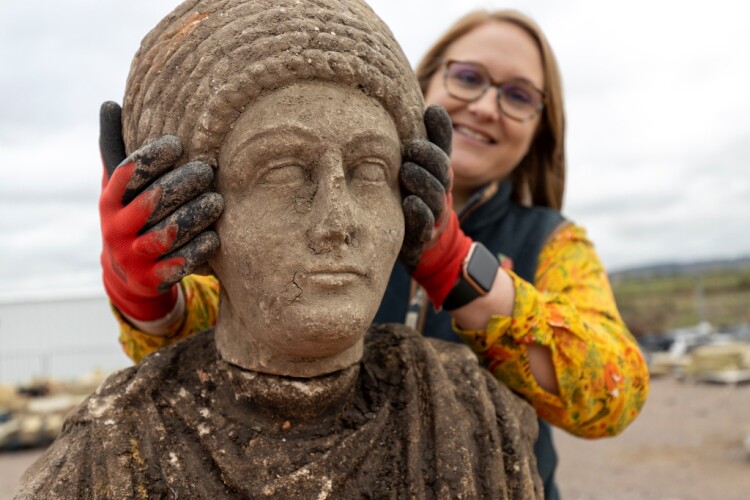Treasure was found while excavating the old St Mary’s Norman church in Stoke Mandeville.
In the final stages of the excavation at the site, archaeologists were excavating a circular ditch around what was thought to be the foundations of an Anglo-Saxon tower. As they dug down, they uncovered three stone busts, which appear to be Roman. The architects described the find as “uniquely remarkable”.
The work has been carried out by L-P Archaeology under the aegis of HS2’s enabling works contractor, Fusion JV ((Morgan Sindall, BAM Nuttall and Ferrovial Agroman).
In addition to the statues, the team also found a broken glass jug, large roof tiles, painted wall plaster and Roman cremation urns.
Rachel Wood, lead archaeologist for Fusion JV, said: “For us to end the dig with these utterly astounding finds is beyond exciting. The statues are exceptionally well preserved, and you really get an impression of the people they depict – literally looking into the faces of the past is a unique experience. Of course, it leads us to wonder what else might be buried beneath England’s medieval village churches. This has truly been a once in a lifetime site and we are all looking forward to hearing what more the specialists can tell us about these incredible statues and the history of the site before the construction of the Norman church.”

As the dig at Stoke Mandeville comes to an end, the team working there have been able to piece together a more detailed analysis of the historic use of the site. The site appears to be a natural mound, which has then been deliberately covered with soil to create a taller mound. It is possible this may have formed a Bronze Age burial site. It appears this was then replaced by a square building which may have originated in the Roman period.
Archaeologists now believe the square building that pre-dates the Norman church is a Roman mausoleum. Roman materials found in the ditch around are too ornate and not enough in number to suggest the site was a domestic building, they say.
The Roman building appears to have been finally demolished by the Normans when building St Mary’s church, after possible reuse during the Saxon period. The walls and demolition rubble of the Roman building are directly beneath the Norman foundations with no soil build up in between. Saxon pottery was also found in a cut of the ditch, as well as a Saxon coin. Further analysis of the data is being undertaken and the team hope to confirm this hypothesis.
Mike Court, Lead Archaeologist at HS2 said: “HS2’s unprecedented archaeology programme has given us new insights into Britain’s history, providing evidence of where and how our ancestors lived. These extraordinary Roman statues are just some of the incredible artefacts uncovered between London and the West Midlands. As HS2 builds for Britain’s future, we are uncovering and learning about the past, leaving a legacy of knowledge and discovery.”
Got a story? Email news@theconstructionindex.co.uk




